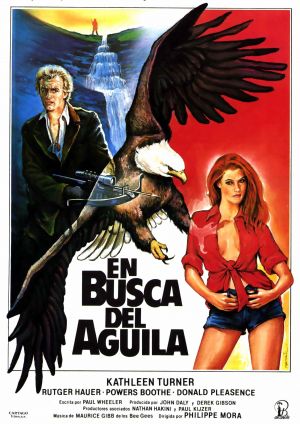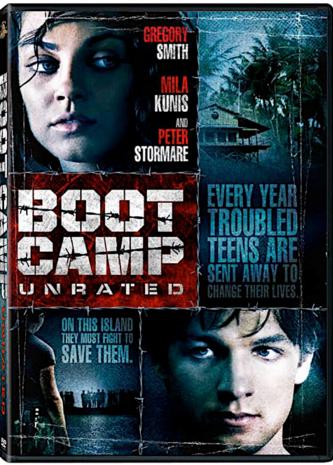 Sometimes, the story behind a movie is more interesting than the movie itself.
Sometimes, the story behind a movie is more interesting than the movie itself.
Rutger Hauer stars in A Breed Apart, playing an eccentric environmentalist named Jim Malden. Malden loves nature but he hates people, with the exception of a local storekeeper named Stella (Kathleen Turner) and her young son. The local fishermen (one of whom is played by Hauer’s Blade Runner co-star, Brion James) may hate him but they are no match for Malden’s guerilla tactics. Recently, a new breed of bald eagle has been discovered and Malden is determined to protect it. At the top of a cliff, there is a nest full of eagle eggs and Malden will not let anyone near them.
Rich collector J.J. Whittier (Donald Pleasence) is determined to get those eggs for himself. In order to deal with Malden, Whittier hires famous rock climber, Mike Walker (Powers Boothe). Disguising himself as a nature photographer, Walker attempts to befriend Malden so that he can get to the eggs. Even as Malden shows Walker why it is important to protect the environment, Walker falls in love with Stella.
With a cast like this, A Breed Apart should have been far more interesting than it was. It provides a rare chance to see both Rutger Hauer and Powers Boothe playing heroes but neither seemed to really be into their roles. Kathleen Turner was sexy but saddled with a terrible accent while Donald Pleasence seemed to be in a different movie. When I watched A Breed Apart last night, I thought it seemed like a very disjointed movie. For instance, the movie abruptly jumped from Stella and Walker first meeting to the end of their first date. There was a random scene of Malden putting on war paint, while remembering the sound of helicopters. War paint combined with helicopters in an 80s movie usually means that someone is having a Vietnam War flashback but Malden’s military background is never mentioned again. Even Walker’s conversion to Malden’s cause and rejection of Whittier’s money seemed to happen offscreen.
According to Wikipedia, It turns out that there was a reason for all that. A Breed Apart was filmed in North Carolina. After principal filming was completed, four reels of film were sent back to Los Angeles. However, only three reels ever arrived in California. One reel disappeared and has never been found. The footage that actually did make it to Los Angeles was reorganized and edited to try to disguise the fact that a huge part of the movie was missing.
It didn’t work.
(ADDENDUM 9/4/2017: Originally, both myself and a lot of other reviewers, were under the impression that one reel of film went missing and, as a result, the film had to be reedited to make up for the missing footage. This story is presented as fact on Wikipedia, which is where I and I assume a lot of other people originally got it. The lesson here is not to use an online encyclopedia that anyone can edit for a primary or even a credible source. In the comments below, Director Philippe Mora has let me know that there was no lost reel and that, instead, there are several different cuts of the film kicking around, some of which are incomplete and some of which are ok. Since Mora actually worked on the film, he is a far more credible source than an anonymous Wikipedia article. I apologize to Mr. Mora for the mistake.)





